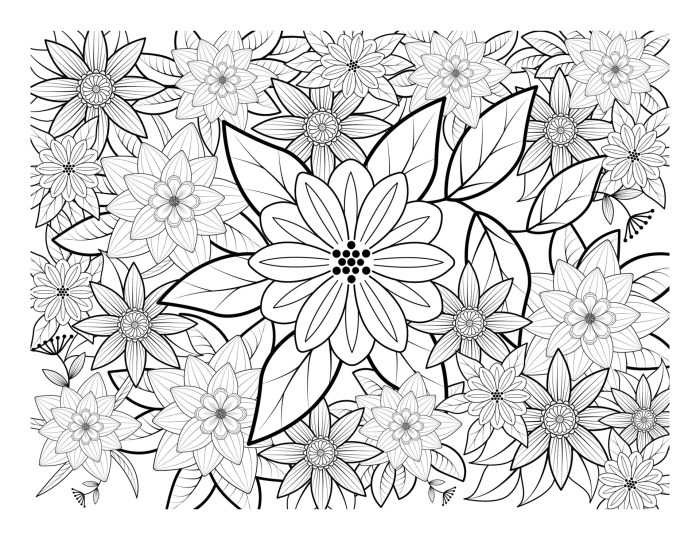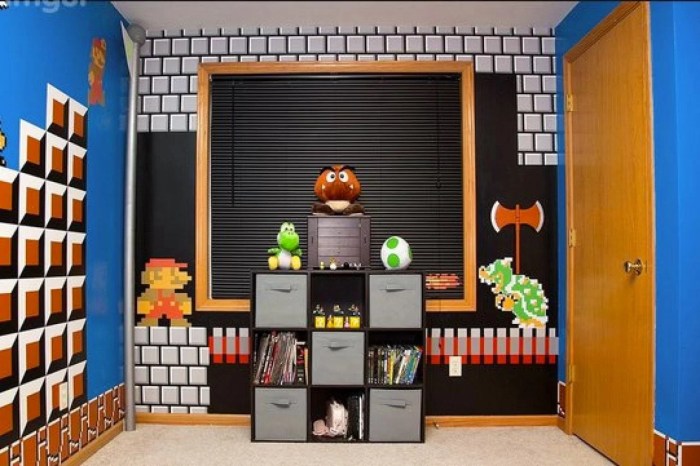Types of Coloring Sheets for Older Kids

Coloring sheets for older kids – Adult coloring books have exploded in popularity, and for good reason. They offer a creative outlet for stress relief and a chance to engage in a mindful activity. However, the designs often cater to a more mature aesthetic and level of detail than what’s typically found in children’s coloring books. This section explores the specific types of coloring pages best suited for older children, who are ready for more complex and intricate designs.
Older children, typically those in their tweens and teens, possess the fine motor skills and patience required for more detailed coloring projects. They also often have more developed interests, allowing for more targeted themes in their coloring pages. The shift from simple shapes and Artikels to complex patterns and detailed illustrations marks a significant difference in the type of coloring experience.
Examples of Intricate Coloring Page Designs
Here are five examples of coloring pages designed to challenge and engage older children, showcasing the variety available beyond basic shapes:
| Mandalas: Intricate circular designs filled with repeating patterns and symmetrical elements. Imagine a mandala with multiple layers of floral motifs, each petal meticulously detailed with tiny dots and swirls. The complexity encourages focus and patience. | Geometric Patterns: Tessellations, kaleidoscopes, and other geometric designs offer opportunities for precise coloring and exploring color relationships. A complex geometric pattern might involve a multitude of interconnected shapes, each requiring careful attention to shading and color blending. | Detailed Animal Illustrations: Realistic or stylized depictions of animals with fine details in fur, scales, or feathers. A coloring page could feature a majestic tiger with individually rendered stripes, each requiring different shades of orange and brown. | Fantasy Creatures: Dragons, unicorns, griffins, and other mythical beasts offer a chance for creative expression and imaginative color choices. A detailed dragon could feature intricate scales, horns, and wings, allowing for a vibrant and unique interpretation. |
| Botanical Illustrations: Highly detailed depictions of flowers, plants, and leaves. A botanical illustration might include a complex orchid with numerous delicate petals, each requiring precise coloring and shading to capture its texture and form. |
Complexity and Detail Levels in Coloring Pages
The key difference between coloring pages for younger and older children lies in the level of detail and complexity. This affects both the design and the overall experience.
- Younger Children: Simple shapes, large Artikels, limited detail. Examples include basic animals with few features, large blocks of color, and simple repetitive patterns.
- Older Children: Intricate designs, small details, complex patterns, realistic or stylized illustrations. Examples include mandalas, detailed animal portraits, complex geometric patterns, and fantasy creatures with many features.
Coloring Mediums and Paper Types
The choice of coloring medium significantly impacts the final result, and different papers are better suited to different mediums. The interplay between medium and paper enhances the overall coloring experience.
- Colored Pencils on Thicker Paper: Thicker paper (at least 100gsm) prevents bleed-through and allows for layering colors to create depth and shading. Colored pencils excel at fine details and precise work.
- Markers on Smooth Paper: Smooth, high-quality paper minimizes bleed-through and feathering with markers. Markers allow for bold colors and quick coverage, but may not be suitable for intricate detail work.
- Watercolors on Watercolor Paper: Watercolor paper is specifically designed to handle the moisture of watercolors without buckling or tearing. Watercolors allow for blending and creating soft, flowing effects, but require more practice and control.
Creating and Sharing Coloring Pages

Designing and sharing your own coloring pages is a fantastic way to express your creativity and connect with others who enjoy coloring. This section will guide you through the process of creating digital coloring pages using design software, and then explore ways to share your creations online responsibly, including copyright considerations.
Digital Coloring Page Creation
Creating a digital coloring page involves several steps. First, you’ll need design software. Popular choices include Adobe Photoshop, Illustrator, or free alternatives like GIMP or Krita. Let’s assume we’re using a program with similar tools. We’ll begin by creating a new document, selecting the desired size and resolution (300 DPI is recommended for high-quality printing).
Then, we’ll use the shape tools to draw the Artikels of our design. This might involve drawing simple shapes like flowers, animals, or geometric patterns, or more complex illustrations. Each shape would be created separately, ensuring clean lines and easy coloring later. Next, we’ll use the fill tool to add a solid black or dark color to the Artikels.
This is crucial for creating a clear coloring experience. To ensure a clean look, we’ll need to carefully adjust the stroke weight of our lines. We’ll then save the file as a high-resolution PNG or JPG, suitable for printing and online sharing. This step is critical to maintain the quality of the lines and ensure the image remains sharp when printed or viewed online.
Finally, we would review the completed design for any imperfections and make necessary adjustments before exporting it.
Right, so like, finding decent coloring sheets for older kids can be a proper faff, innit? You know, something a bit more, like, grown-up than the usual kiddy stuff. But check out this wicked site for kids free coloring pages , they’ve got loads, and you might even find some proper cool designs that aren’t, like, totally babyish.
Then you can just print ’em off and get colouring, bruv! Plenty of options for older kids to choose from there, guaranteed.
Sharing Coloring Pages Online and Copyright
Sharing your creations online requires careful consideration of copyright and licensing. You retain copyright to your original artwork automatically. However, deciding how others can use your work is important. You can choose to offer your coloring pages under a Creative Commons license, which allows others to use, share, and even modify your work under specific conditions. Alternatively, you can retain all rights and only permit personal use, preventing commercial use without your permission.
Clearly stating your licensing terms on the platform where you share your work is crucial. For example, you might include a statement such as: “This coloring page is free for personal use only. Commercial use requires written permission from the artist.” This helps avoid misunderstandings and potential legal issues. Watermarking your images is another way to protect your work, though it can affect the visual appeal of the final product.
Resources and Platforms for Sharing Coloring Pages
Several online platforms are available for older children to find and share their coloring pages. It’s important to choose platforms that are appropriate for their age and offer safe sharing options.
- DeviantArt: A popular platform for artists to share their work, including coloring pages, with a strong community aspect.
- Pinterest: A visual discovery tool where users can create boards and pin images, including coloring pages, making them easily searchable.
- Etsy: While primarily for selling items, Etsy can also be used to share free coloring pages or sell digital downloads.
- Personal Blogs and Websites: Creating a personal blog or website provides complete control over how coloring pages are shared and licensed.
- Social Media Platforms (with caution): Platforms like Instagram or Facebook can be used to share coloring pages, but copyright protection should be carefully considered.
Coloring Page Resources and Accessibility: Coloring Sheets For Older Kids

Finding high-quality, engaging coloring pages specifically designed for older children can sometimes feel like a treasure hunt. Luckily, there are many resources available online, offering a diverse range of styles and themes to cater to different interests and skill levels. Accessibility, however, is a crucial element often overlooked, and ensuring that coloring is an inclusive activity for all children is vital.Finding suitable coloring pages for older kids isn’t always easy.
Many sites cater to younger children, leaving older kids with limited options. This section will explore various resources and the importance of inclusivity in coloring page design and distribution.
Websites and Platforms Offering Printable Coloring Pages for Older Kids
Many websites offer printable coloring pages, but finding those suitable for older children requires some searching. High-quality designs, intricate details, and engaging themes are key elements to attract and retain older children’s interest. The following are examples of places to look:
- Etsy: Etsy hosts numerous independent artists selling unique and often complex coloring pages, often featuring themes appealing to older audiences like mandalas, intricate floral designs, or fantasy creatures.
- Creative Fabrica: This platform offers a vast library of digital downloads, including many coloring pages, often with options for different skill levels and themes.
- Teachers Pay Teachers (TpT): While primarily a resource for educators, TpT offers many printable coloring pages, some free and some paid, often designed with specific educational objectives in mind.
- Pinterest: While not a direct source, Pinterest acts as a powerful search engine for coloring pages. Searching for specific themes or styles will often lead to downloadable options from various websites.
Creating Accessible Coloring Pages for Children with Disabilities
Designing accessible coloring pages requires thoughtful consideration of the diverse needs of children with disabilities. Visual impairments and motor skill limitations are two key areas that need specific attention. For children with visual impairments, high contrast between the lines and the background is crucial. Thick, bold lines are easier to follow, and larger print sizes for any accompanying text are essential.
For children with motor skill limitations, larger coloring areas, simpler designs, and perhaps even pre-printed sections to encourage creativity within constraints can be incredibly beneficial. Consider using textured paper to aid grip and control.
Benefits of Offering Free and Paid Coloring Page Options, Coloring sheets for older kids
Offering both free and paid coloring page options is essential for ensuring financial accessibility. Free options allow children from all socioeconomic backgrounds to participate, while paid options can support artists and creators, allowing them to continue producing high-quality content. A mix of free and paid options ensures that coloring remains an inclusive and enjoyable activity for everyone. The free options could be simpler designs, while the paid options could offer more complex and detailed designs, or perhaps access to a larger library of options.
Frequently Asked Questions
What’s the best type of paper for detailed coloring?
Heavier weight paper (at least 110lb) is best for preventing bleed-through, especially with markers and watercolors. Think cardstock, or even watercolor paper for the ultimate experience!
Are there coloring books specifically designed for teens with anxiety?
Yes! Many coloring books focus on calming designs and patterns, specifically marketed for stress relief and mindfulness. Look for those with mandalas or nature themes.
Where can I find free coloring pages online?
Many websites offer free printable coloring pages. Just search “free printable coloring pages for teens” or “free adult coloring pages” online. Be sure to check the license before using commercially.
Can coloring help with ADHD?
Absolutely! The focused attention required for detailed coloring can be beneficial for individuals with ADHD. It provides a structured activity that helps improve concentration.



